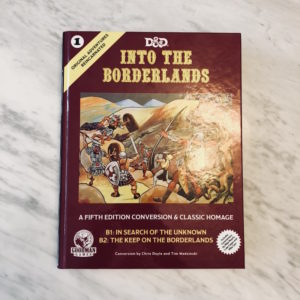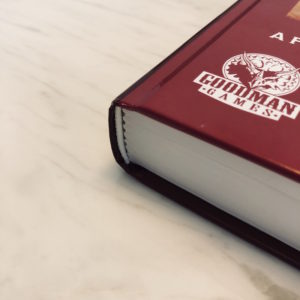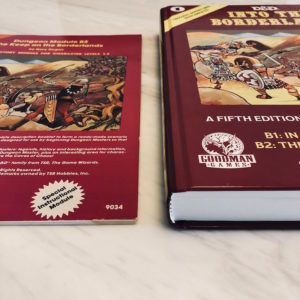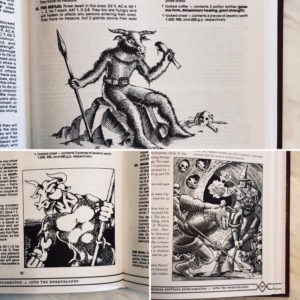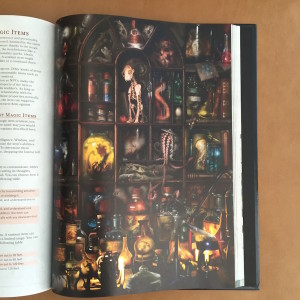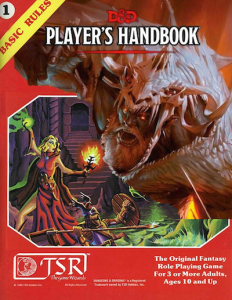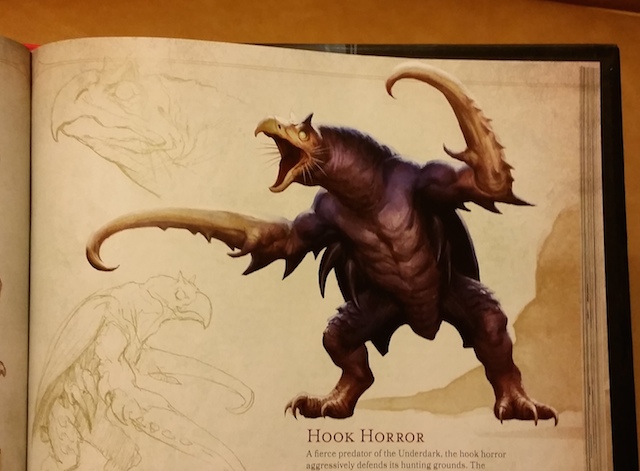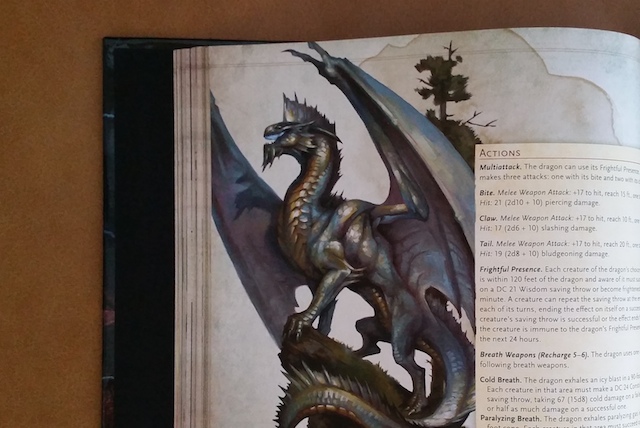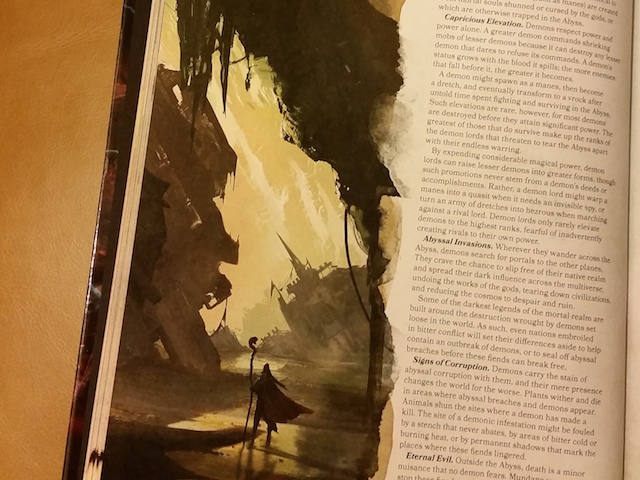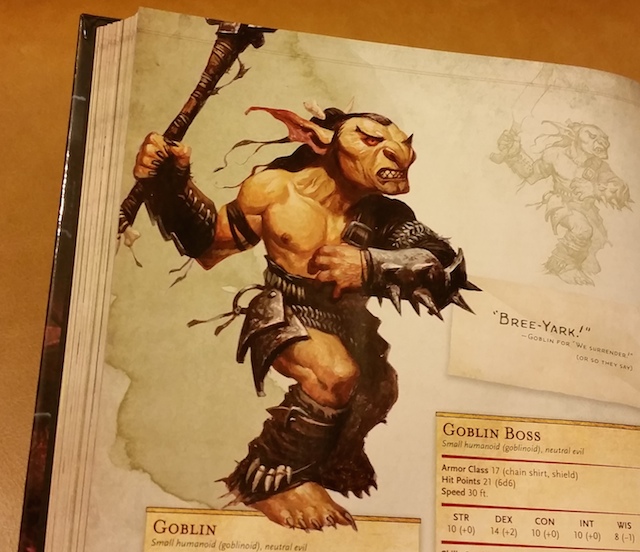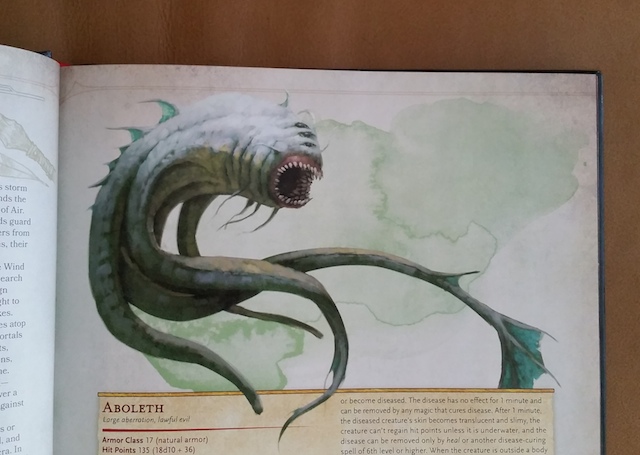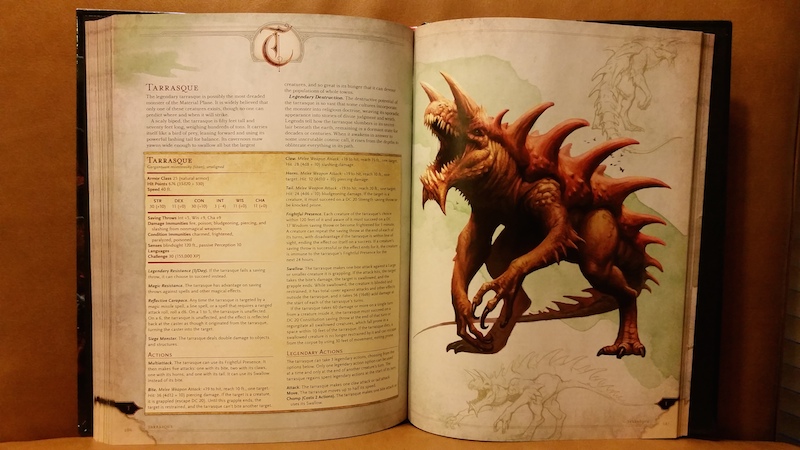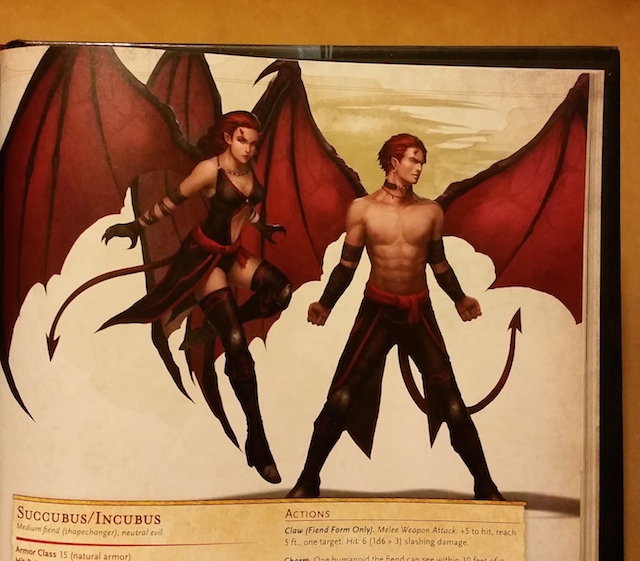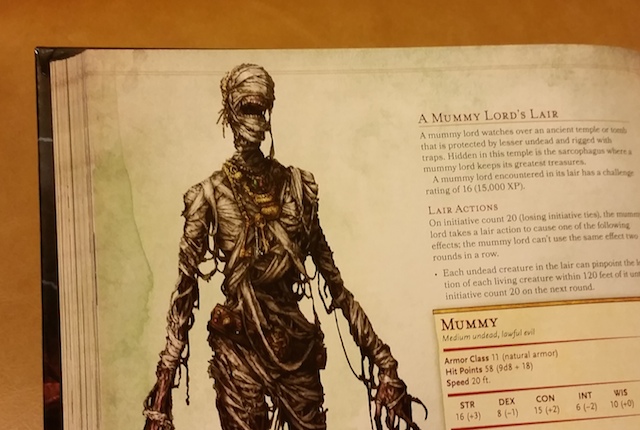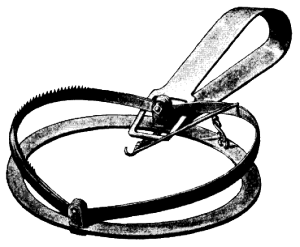Into the Borderlands is a hardcover compilation of the training modules B1 and B2, both originally published in 1979, along with conversions for fifth edition D&D. There are several intro essays reminiscing about experiences with these foundational modules, including one by Mike Mearls, currently manager of research and design for D&D. The early modules are scans rather than newly typeset and there are two printings of each original module, showing some minor textual and presentation differences. The conversion for fifth edition includes new black and white accompanying art and some expanded encounters. The original modules are classics for a number of reasons that I will avoid discussing much, but if you are curious some good places to start are the reviews over at Dungeon of Signs (B1 and B2). Also, check out this essay related to B2 on how limitation can help foster creativity.
Physically, the book has a stitched binding and, though on the large side in terms of width, feels solid and pleasant to hold. Though I can see this being only a collector’s item for many people, it would be usable as an actual game tool also. Apart from players only familiar with 5E, most potential customers probably already have copies of B1 and B2, if not physically then in PDF (drivethru links: B1 and B2). Because of this, the value that this product should add, for anyone other than a pure collector, must be over and above the simple information content of the original modules. The high-quality form factor definitely delivers on part of this.
Unfortunately, there are some weaknesses too. First, I noticed several typos, even just limited to the first few pages1. Second, the original module scans are a bit grainy compared to my older printing of B2. Third, while it is hard for me to really evaluate how useful the 5E conversion would be to a referee only familiar with that edition, from my vantage it does seem to waste some space. For example, who needs to be told in a stat block that siege weapons are immune to psychic damage? Fourth, this is a matter of taste, but I find the new art to be somewhat uninspired. The book also feels repetitive, given the multiple versions of the same module, and the 5E conversion further recycles a lot of text. This is somewhat baked into the product concept though, so take it more as a comment and less as a criticism.
There is so much potential in representing classic modules such as B1 and B2. However, the book for the most part ignores this low-hanging fruit. The three stocked examples of B1 dungeons are a step in the right direction, but there are many other unexplored possibilities. Goodman could have included alternative maps of Quasqueton, such as these beautiful examples from Dyson (one, two). Or, what about some creative play aids, such as maps annotated with content or player handouts? There could be essays about how to creatively flip some conventional assumptions, such as considering the keep as the target of heists. A discussion of adapting modules to local campaign worlds, along with possibly an example reskin, would have felt right at home and maybe even made the book a touchstone for thinking about integrating modules. For an example of creatively using the framework provided by B2, consider this idea about replacing the caves ravine with the Stonehell mega-dungeon ravine.
Overall, I am glad the book was made, and am continually impressed by the physical quality of Goodman volumes, but I wish that the compilers took more care with the finishing details for the text. I hope that Goodman continues the Original Adventures Reincarnated series with other classic TSR modules. That said, the product could have been so much more.
Purchase info
- Date: 2018-01-29
- Price: $49.99 + $9 (shipping) = $58.99 USD
- Details: Goodman Games Store pre-order
See here for my approach to reviews and why I share this purchase info.
1. On the copyright page: 5E Edition (note redundancy). In Mearls’ essay: “It was the first D&D adventure I read, thought it would be years before I ran it” (thought should be though).↩
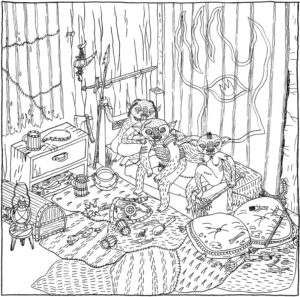
B2 room 12 fan art by Evlyn

